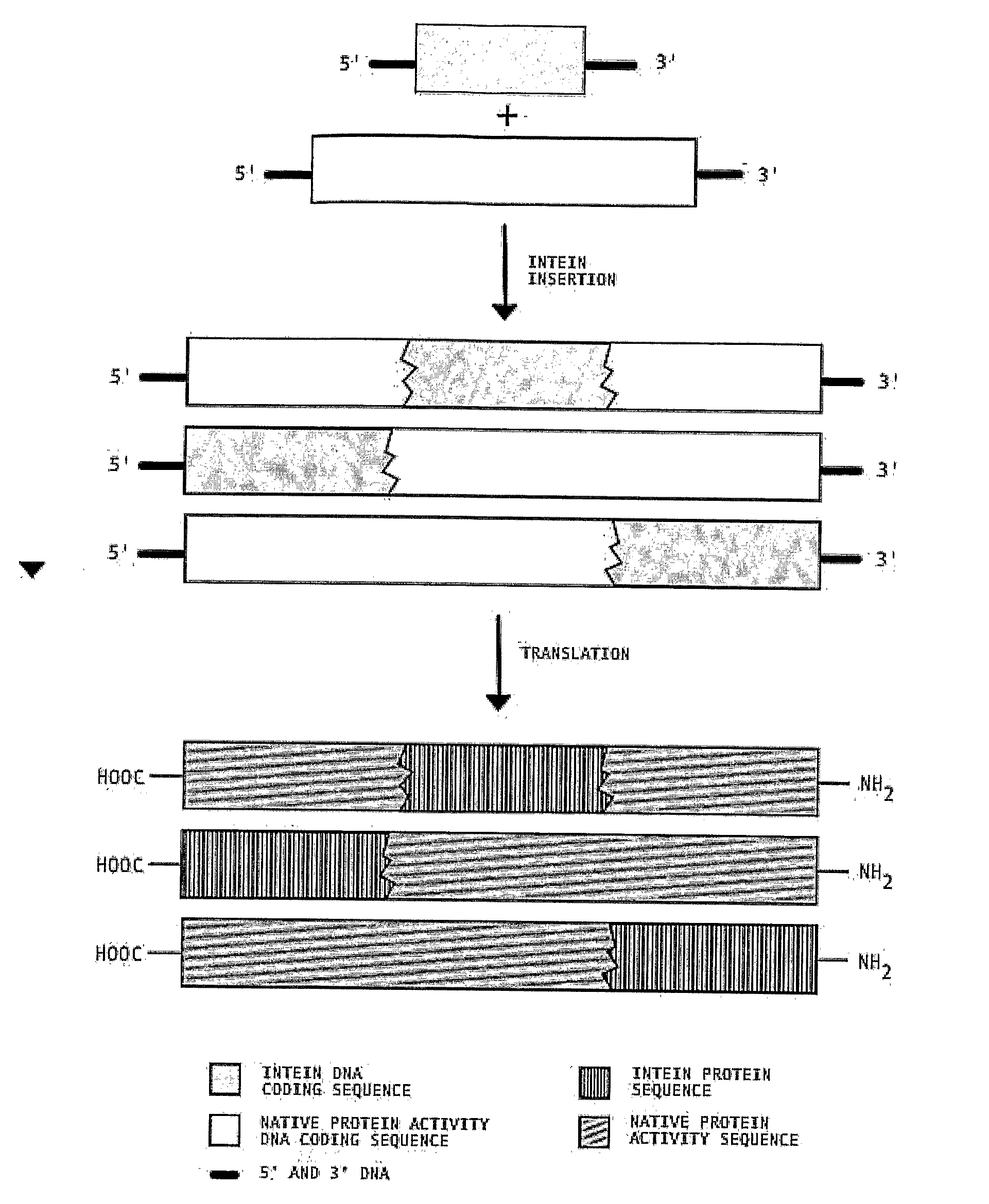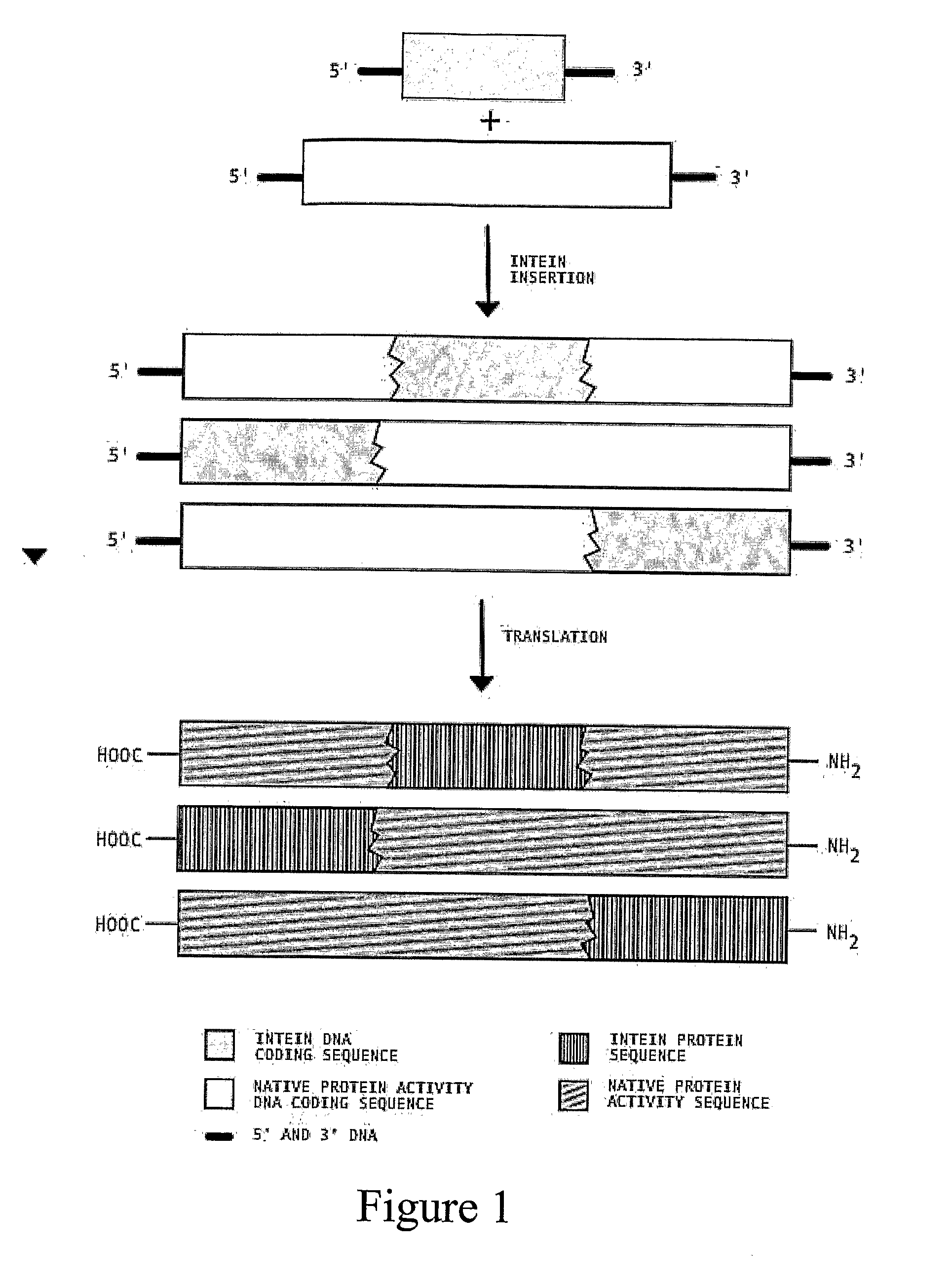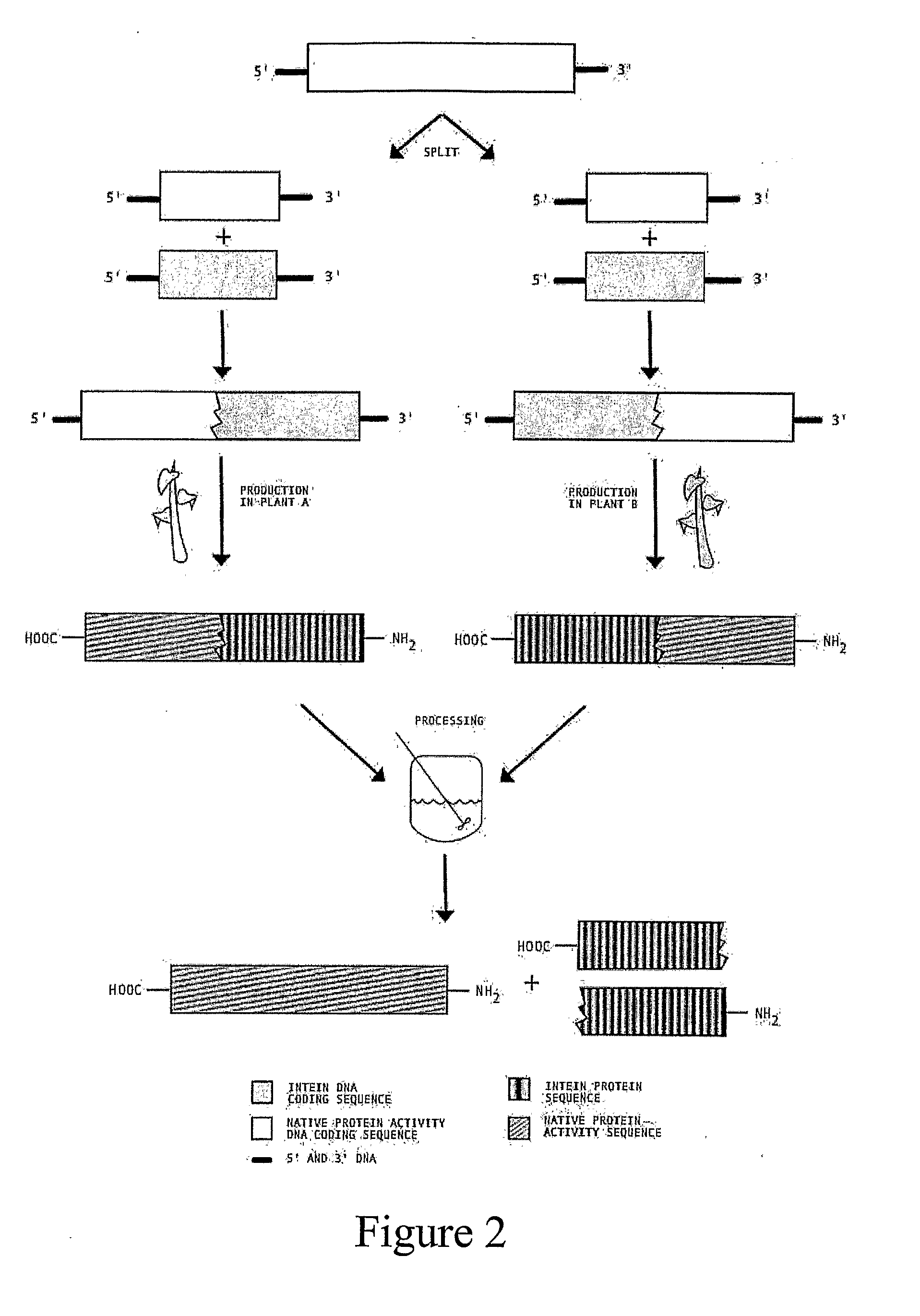Transgenic Plants Expressing Intein Modified Proteins and Associated Processes for Bio-Pharmaceutical Production
a technology of intein and modified proteins, applied in the direction of growth hormones, hormone peptides, animal/human proteins, etc., can solve the problems of increasing the possibility of inadvertent contamination of the food chain, preventing eventual industry adoption, and potential safety problems
- Summary
- Abstract
- Description
- Claims
- Application Information
AI Technical Summary
Benefits of technology
Problems solved by technology
Method used
Image
Examples
example 1
Production of Human Growth Hormone from Multiple Tobacco Plants using Intein Modification
[0059]The activity and structure of human Growth Hormone (hGH, also called human somatotropin) has been studied in detail and several forms are currently licensed for therapeutic intervention in growth hormone deficiency, Turner Syndrome, chronic renal failure, and HIV wasting syndrome. The native form of human somatotropin has been previously expressed in plants (Staub, et. al, 2000).
[0060]This example describes the procedure for producing human Growth Hormone (hGH, also called human somatotropin) from intein-modified hGH genes in tobacco plants. In this example, we have selected the codon optimized version of the hGH gene (GenBank Accession # AF205361) [SEQ ID NO: 1] and the split intein from Synechocystis Sp. (GenBank Accession # AF545504 (In), AF54505 (Ic)) [SEQ ID NOS: 2 and 3]. Although variations of the different steps can be used to practice this invention, the procedure proceeds by: 1) ...
example 2
Production of Human Erythropoietin in Tobacco Plants Using Intein Modification
[0064]The activity and structure of human Erythropoietin has been studied in detail (Lai, et al., 1986) and several forms are currently licensed for therapeutic intervention in anemia. The native form of human erythropoietin has been previously expressed in plants (Cheon, et. al., 2004). Expression or erythropoietin in its native form affected plant morphology and reproductive capabilities, hence intein modification may reduce the negative effects of expressing the protein in plants.
[0065]This example describes the procedure for producing human erythropoietin (hEPO) from an intein-modified hEPO gene in tobacco, although other plant hosts could be used. In this example we have selected EPO gene (GenBank Accession # NM000799) [SEQ ID NO: 5] and a version of the RecA intein from Mycobacterium tuberculosis (GenBank Accession # X58485) [SEQ ID NO: 6] with the homing endonuclease coding region removed (base pair...
PUM
| Property | Measurement | Unit |
|---|---|---|
| temperature | aaaaa | aaaaa |
| pH | aaaaa | aaaaa |
| pH | aaaaa | aaaaa |
Abstract
Description
Claims
Application Information
 Login to View More
Login to View More - R&D
- Intellectual Property
- Life Sciences
- Materials
- Tech Scout
- Unparalleled Data Quality
- Higher Quality Content
- 60% Fewer Hallucinations
Browse by: Latest US Patents, China's latest patents, Technical Efficacy Thesaurus, Application Domain, Technology Topic, Popular Technical Reports.
© 2025 PatSnap. All rights reserved.Legal|Privacy policy|Modern Slavery Act Transparency Statement|Sitemap|About US| Contact US: help@patsnap.com



